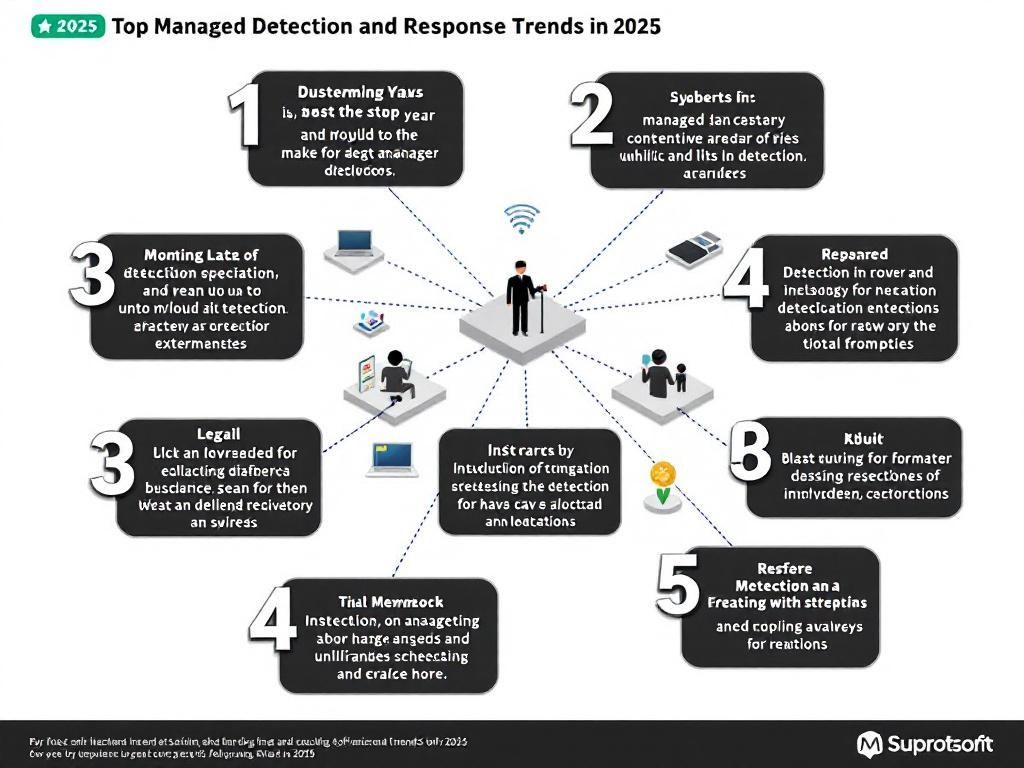Boost Your Network Security with Automation
Discover how automation can enhance your network security, streamline processes, and protect your data from potential threats.

In today’s fast-paced digital landscape, the need for robust network security has never been more critical. With cyber threats evolving at an alarming rate, organizations are increasingly turning to automation as a means to bolster their defenses. Automation not only streamlines security processes but also enhances efficiency and accuracy in threat detection and response. This article delves into the various aspects of how automation can significantly improve network security.
Table of Contents
Understanding Network Security Automation
Network security automation involves the use of tools and technologies to automate tasks related to the protection of networks. This encompasses everything from monitoring and threat detection to incident response and compliance management. By leveraging advanced automation techniques, organizations can reduce human errors, speed up operations, and maintain a consistent security posture.
Key Components of Network Security Automation
When discussing network security automation, several components are essential to consider:
- Threat Intelligence: Integration of threat intelligence feeds can help automate the identification of potential threats.
- Incident Response: Automated incident response tools can react to threats faster than human analysts.
- Configuration Management: Automated configuration tools can ensure that network devices adhere to security policies.
- Log Management: Automatic log collection and analysis can identify suspicious activities in real time.
- Vulnerability Management: Tools that automate vulnerability scanning and patch management keep systems secure.
The Benefits of Automation in Network Security
Adopting automation in network security yields multiple benefits:
1. Improved Threat Detection
By utilizing automated systems, businesses can detect anomalies in network traffic that may signify a security breach. The speed at which machines can analyze data far surpasses human capabilities, allowing for quicker identification of potential threats.
2. Reduced Response Times
Time is of the essence when responding to security incidents. Automated incident response systems can execute predefined actions without human intervention, significantly decreasing the time taken to mitigate threats.
3. Enhanced Consistency
Humans are prone to errors, especially when performing repetitive tasks. Automation ensures that processes are executed consistently every time, thus enhancing reliability and reducing the risk of oversight.
4. Cost Efficiency
While there might be an initial investment in automation tools, the long-term savings in terms of reduced staffing needs, fewer breaches, and lower recovery costs are significant.
Implementing Automation in Network Security
To successfully implement automation in your network security strategy, consider the following steps:
Step 1: Assess Current Security Posture
Before introducing automation, evaluate your existing security measures. Identify gaps where automation could enhance your current operations.
Step 2: Choose the Right Tools
There is a plethora of automation tools available. It’s essential to select the ones that align with your specific needs. Factors to consider include:
| Tool Type | Examples | Use Case |
|---|---|---|
| SIEM (Security Information and Event Management) | Splunk, LogRhythm | Real-time monitoring and analysis of security events |
| SOAR (Security Orchestration, Automation, and Response) | Palo Alto Cortex XSOAR, IBM Resilient | Automating incident response processes |
| Vulnerability Scanners | Nessus, Qualys | Identifying and managing vulnerabilities in systems |
Step 3: Develop Automation Playbooks
Creating playbooks will outline automated responses to specific security events. These playbooks should be detailed and tested regularly to ensure effectiveness.
Step 4: Monitor and Optimize
After implementation, continuous monitoring is crucial. Analyze the performance of automated tools and optimize processes based on real-world outcomes.
Challenges of Automation in Network Security
While automation presents numerous advantages, several challenges can arise:
1. Complexity of Configuration
Setting up automation tools often requires extensive knowledge of both the tools and the network environment. Incorrect configurations can lead to vulnerabilities.
2. Dependence on Technology
Over-reliance on automated systems can result in complacency among security teams, leading to a potential decline in human oversight.
3. Integration Issues
Integrating new automation tools with existing security infrastructure can be challenging and may require additional resources.
Future of Automated Network Security
The landscape of network security is continually evolving, and automation is at the forefront of this transformation. As artificial intelligence and machine learning technologies advance, we can expect even greater capabilities in predictive security measures and enhanced threat intelligence.
Conclusion
Incorporating automation into network security is no longer a luxury but a necessity. As cyber threats become more sophisticated, leveraging automated solutions allows organizations to stay ahead of potential breaches, streamline operations, and ultimately protect valuable data more effectively. The journey towards a secure network through automation requires thoughtful planning, implementation, and continuous evaluation, but the outcome is well worth the investment.
FAQ
What is network security automation?
Network security automation refers to the use of tools and technologies to automate security processes, enhancing the efficiency and effectiveness of securing network infrastructures.
How does automation improve network security?
Automation improves network security by reducing human error, speeding up response times to threats, and allowing security teams to focus on more complex tasks while routine processes are handled automatically.
What are the benefits of using automated security solutions?
The benefits of automated security solutions include increased accuracy in threat detection, faster incident response, cost savings, and the ability to manage security at scale.
Can automation help in compliance with security regulations?
Yes, automation can help organizations maintain compliance with security regulations by ensuring that security policies are consistently enforced and audits are easier to conduct.
What tools are commonly used for network security automation?
Common tools for network security automation include Security Information and Event Management (SIEM) systems, intrusion detection systems (IDS), and automated incident response platforms.
Is network security automation suitable for all organizations?
Network security automation is suitable for organizations of all sizes, but the complexity and scale of the implementation may vary based on specific security needs and resources.








